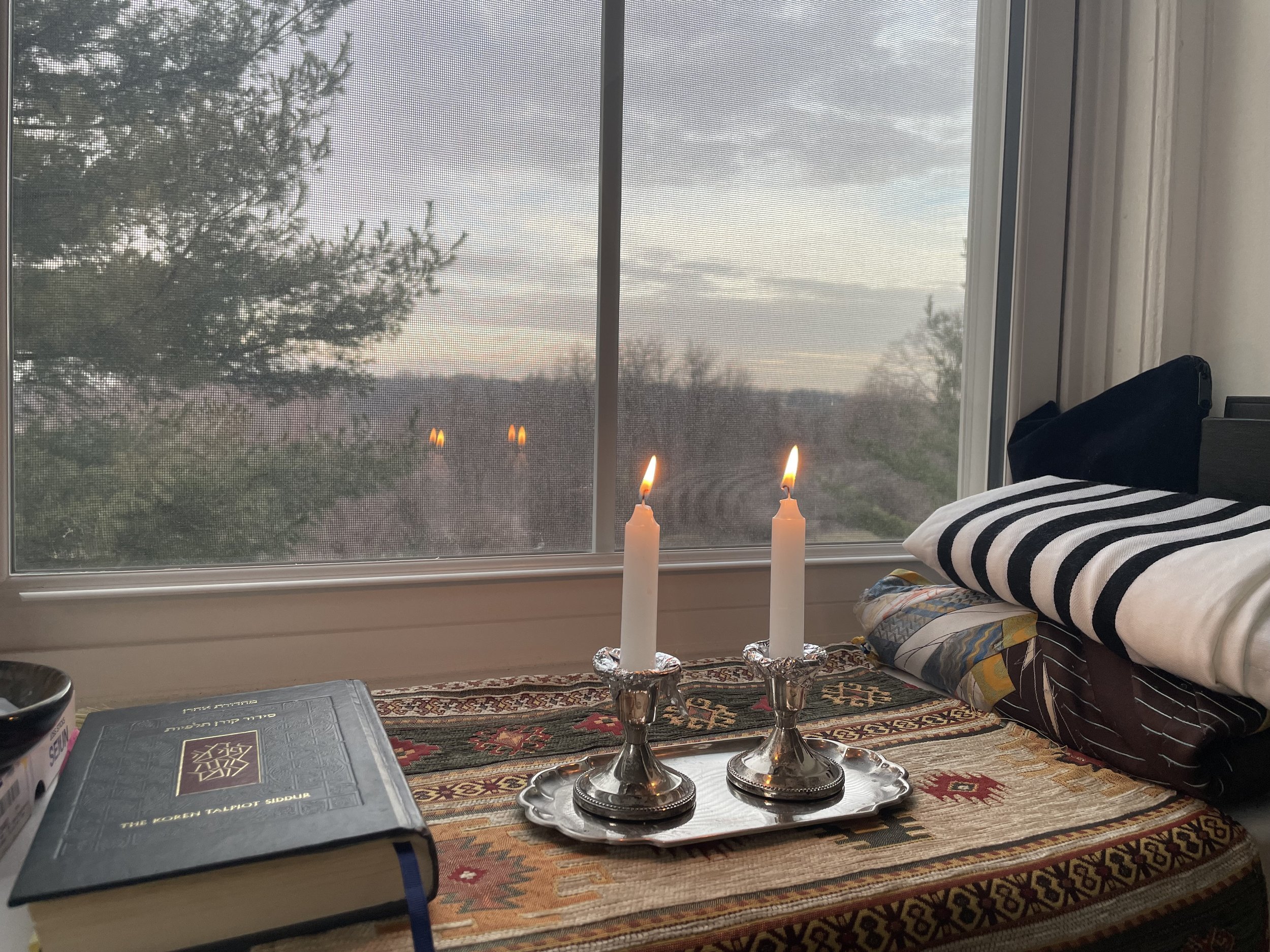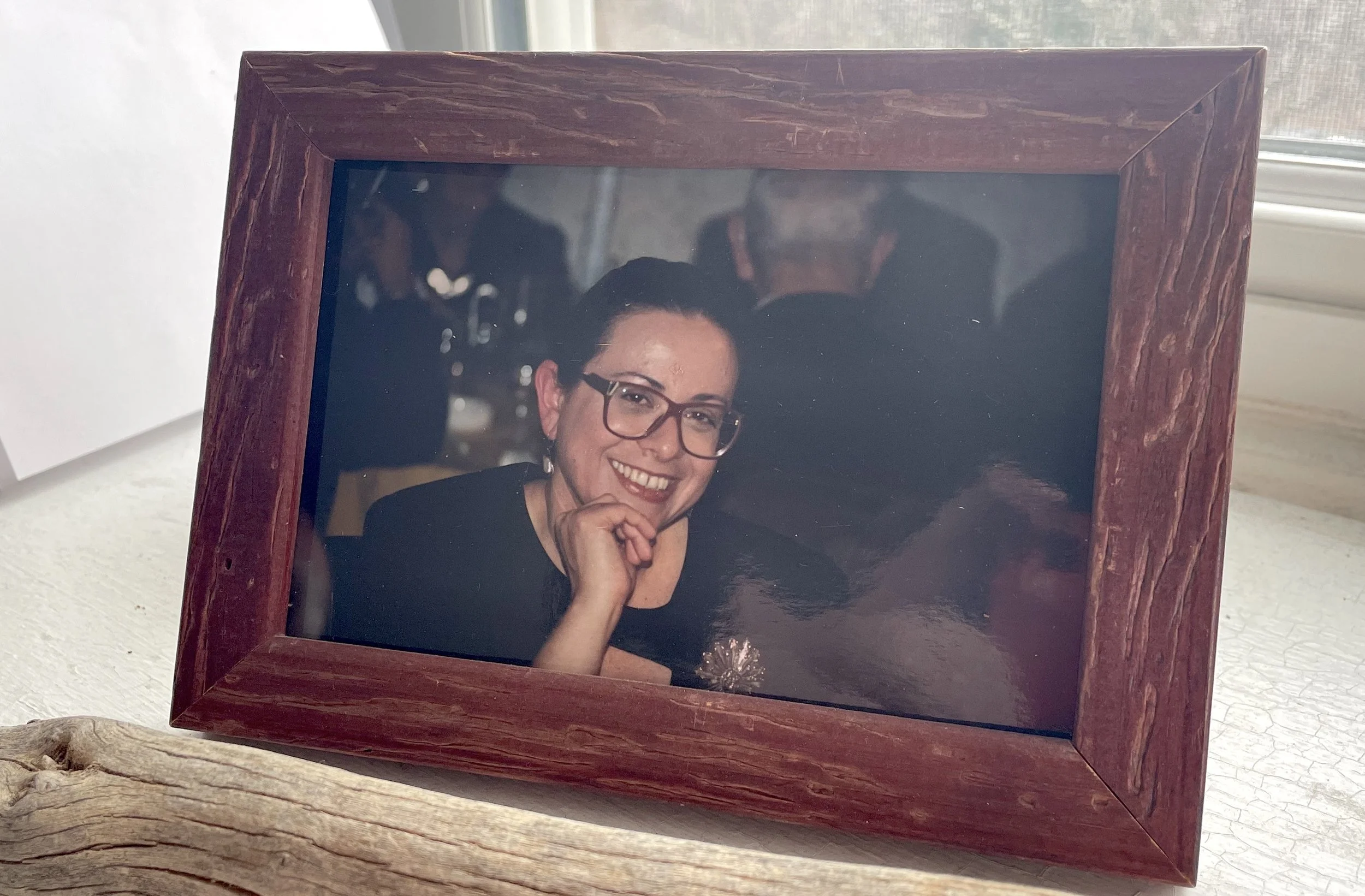Barur
The Ancestral, the Emergent, and My Mother’s Candlesticks.
A few months ago my father Benni told me he found a set of candlesticks. He told me a story relating to my mother, Zehava bat Yosef v’Sarah z”l (זהבה אפעל, זהבה בת יוסף ושרה ז״ל) who was a youth psychologist and counselor at a grade school in a town called Tel Mond in central Israel and during the Palestinian intifada. There were many terror attacks within Israel and buses that exploded in major cities. in 1994, one exploded in Dizingoff, Tel Aviv’s main street, with many casualties, including children from the school that she counseled.
He continued that my mother supported the families and other children who lost their friends. One day, a woman came to visit my mother - she was dati’ya, “a religious Jewish woman.” We had no religious friends, so I was very surprised when he said that. She gave her a gift as a token of appreciation of the support she offered to the families and the children. I don’t know if this woman was a parent of one of the children, possibly. The gift was a set of candlesticks. Who was that woman? I will never know. I reached out to local social media groups and see if I can find her.
My mother was diagnosed with stage 4 leukemia a few months later and passed away the following year at the age of forty-six, nearly my age, today. It was a shocking unfolding for my father, sister and I, rippling through to this day.
—
Rekindled
There is a lot behind the story above, especially today as Israel is facing historic political risk to its democracy, and tensions between religious and secular jews mount, affecting relationships with jews in the diaspora. All this as backdrop to intensifying fear I see from Palestinians friends and colleagues, bearing witness with apprehension as the Jewish state gambles with their future. The same gamble that pushed Qalqilya resident Saleh Abdel Rahim al-Souwi to blow himself up with 50 others on that dreaded bus in 1994.
My family never lit shabbat candles at home as I was growing up. What are we crazy dati’im (religious)? We used to have Friday night meals with my mother’s parents, but I think candles were already lit when we arrived? Not sure. This memory is hazy. Hearing my grandfather recite kiddush was the only piece of Jewish liturgy I encountered regularly as a child. His last name, before it was nationalized-hebrewized in Israel, was Kandel.
For twenty nine years, these candlesticks were never used. So when mt father told me this story, and then asked me whether I wanted these candlesticks. I said, “barur,” obviously. He traveled from Israel to visit me, and he brought the candlesticks with him. One Friday night during his visit, we were invited for Shabbat dinner at Rabbis Lisa Goldstein & Igal Harmelin’s home in Manhattan. With their natural grace and kindness, they lit Shabbat candles and led us in songs and kiddush blessing. My father was very moved.
Something else was rekindled. My parents home, and I believe my father’s home, was pretty secular. Part of the response to the trauma of the holocaust surviving generation of my grandparents was to distance from religiosity and Ashkenazi culture out of despair & disappointment with the lack of intervention, human or beyond. It resulted in many things: one, the maverick entrepreneurial cosmopolitan Israel on one hand, the occupation of Palestine that produced al-Souwi’s tragic action on the other, and people like myself and others on journeys of reclaiming erased, or forgotten, ancestral ways.
The Dream of Reclamation
Reclaiming my ancestral ways, as someone who grew up chiloni—non-religious—has been confusing, gut-wrenching, and cathartic. Confronting cultural erasure, both within and without—the insults, injustices, moral injuries—and the soft ache of forgetfulness (“Who was that Datiyah woman? What was my mother’s favorite holiday?”), I see that even the word reclamation cannot contain what this work asks.
The dream of reclamation feels real. Yet as long as I chase an imagined return—one day I will live like my ancestors!—I stay behind the curve, tangled in imaginations: shame on one side, and on the other, the arrogant self-righteousness of believing I’ve gained the right way, better.
Enter Through One Desire
The Zohar teaches aalin b’khad tiuvtah—“ascend through one desire”—gathering the seventy scattered emanations of the heart into a single current.
The Hebrew berur—to sift, to clarify, to discern—names this process. I recall moving through the fragments: the strange yearning for a white shirt on Shabbat, fumbling to bind a lulav, losing my place in a siddur—each grief, each longing. Hebrew prayer, beyond right or wrong, vibrates through my body—that is real. Invoking the matriarchs and patriarchs brings a closeness to mysterious, unmet kin—that is real. Falling to both knees on Yom Kippur, joining a long lineage of humans in awe before the infinite—and before the minuscule scale of a single life—that is real. For me.
It is less about “the right way the ancestors did something,” and more about trusting that however a connection manifests, it may be the ancestors themselves. Beneath it all, a deeper current reveals itself: deep time—not the eons of geology, but the folding of all moments into this one. My teacher, Hazzan Jack Kessler, taught that prayer opens such portals—where past, present, and future meet in awareness. That meeting is the wedding of Kudsha Brich Hu v’Shechintei—the Blessed One and the Shekhinah—Sinai and Mashiach: indescribable, yet unmistakable.
The Zohar likens this mystery to one who cannot grasp it, yet knows it—like one who inhales a scent and becomes perfumed by it, instantly, clearly - Barur.
Ancestral:Emergent
What is it like to shift from reclaiming to yearning—not to recreate a past horizon forever receding, but to bear witness, moment by moment, to whatever arises in heart and mind, and tend to that?
I call this the ancestral:emergent. It is neither the archaic ancestral—an over-identification with inherited trauma—nor a detached, stoic “now.” It is an unfolding: alive, porous, aware. What is it like to live at this edge of the ancestral:emergent—aware of the dream, the yearning for both past and future shaped by ancestral tendrils—and to meet it with radical faith, practice, and presence?
There are no maps for this. No allegiance to a shadowy, elusive past. Here, freedom begins. In this deep time, I think of the forever-lost face of the woman who gifted these candlesticks to my mother. I think of little al-Souwi held by his mother in the hills of Qalqilya; of the children on Bus 50; all held, true, felt.
What might deep time reveal within the fires of Israel’s struggles—between secular and religious, Israeli and Palestinian, Mizrahi and Ashkenazi? Messy, chaotic, raw, and real—yet lucid, present—where grief can finally be met and loved in the fire of yearning: grief for all those we have lost and will lose, and more fundamentally, the grief of our separation from deep time, from Presence itself.
—
Every evening during my father’s visit, when I came for dinner at his Airbnb, he would ask, “Do you want to light candles?”
I’d laugh and say, “Aba, ze lo Shabbat—it’s not Shabbat.”
And he’d smile, eyes bright: “It doesn’t matter—we can always light Shabbat candles.”
And I’d answer, “Yes. That’s right. We can always light Shabbat candles. Barur.”


